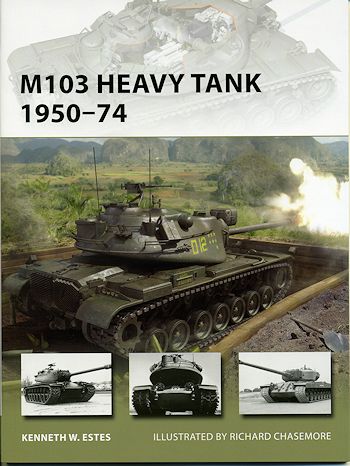 Just
to show you how little I know about tanks, I had no idea that the US had an
operational heavy tank until the introduction of the M1 Abrams. While the
Germans had the Tiger and the Soviets had the KV series and later the IS series
of heavy tanks, the US, it seemed, decided it was better to have many medium
tanks rather than a few heavies. And there are reasons for this. Heavy tanks are
expensive to build, not terribly fast, weighed a great deal so even transporting
them could be an issue, were not able to use many extant bridges, and when they
got stuck, they were difficult to get un-stuck.
Just
to show you how little I know about tanks, I had no idea that the US had an
operational heavy tank until the introduction of the M1 Abrams. While the
Germans had the Tiger and the Soviets had the KV series and later the IS series
of heavy tanks, the US, it seemed, decided it was better to have many medium
tanks rather than a few heavies. And there are reasons for this. Heavy tanks are
expensive to build, not terribly fast, weighed a great deal so even transporting
them could be an issue, were not able to use many extant bridges, and when they
got stuck, they were difficult to get un-stuck.
However, there was a real need for one in the later years of the war
when it was seen how easily medium tanks were defeated by the bigger German
heavies. With the Cold War underway, it was pretty obvious that the US Army's
tanks would be rather powerless against the bigger Soviet heavies.
The US Marines also wanted a heavy tank. They would send their mediums
ashore in the first wave, and follow them up with the big guns. In fact, it is
pretty much the USMC that caused the M-103, as it became to be known, to see the
light of day. The Army tried to talk the Marines into the M-60, but the USMC
found those tanks to be unacceptable for their use. They wanted the big gun and
the heavy armor.
The Army realized that it would probably need a heavy and so somewhat
reluctantly, and through the usual trials and tribulations of development, saw
to it that the M-103 made it into production. Production was quite small for a
tank with only about 300 units being built, 220 of them for the Fleet Marine
Force. Even the initial production tanks had defects and while some deficiencies
were taken care of on line, others had to be fixed post production. The USMC
found the initial M-103 to be totally unacceptable so their tanks sat in storage
for years until the fixes were made and eventually produced the M-103A1.
One of the major glitches in the original M-103 was that the floor did
not rotate with the turret. While the Army accepted this and eventually sent its
heavies to Europe, the USMC did not. Eventually they were delivered. The troops
loved them. They were just what was needed for the mission. In fact, when
training with them, they had to be very careful of how they were fired so that
rounds would not ricochet into nearby towns. It had a super flat trajectory, a
very high muzzle velocity and heavy ammunition to go with its 120mm gun.
Though never used in combat, they served a long and productive life. The
US Army even borrowed several M-103A1s for use in Europe and the Marines had all
their extant M-103A1s even further modified with diesel engines and other
upgrades. However, by the early 1970's they had pretty well lived out their
career and the USMC was forced to accept a tank they did not want, the M-60.
The author gives a full background, the story of the long development of
this tank (which was never given a name), and its eventual use and
modifications. It makes for a most interesting history of this big, Cold War
tank and is a book that deserves a place on the shelf of any armor enthusiast.
April 2013
For more on the complete line of Osprey books,
visit www.ospreypublishing.com. In the US, it is
Osprey Direct at 44-02 23rd St, Suite 219, Long Island City, NY 11101., where you can
get a catalogue of available books.
If you would like your product reviewed fairly and quickly, please
contact
me or see other details in the Note to
Contributors.
 Just
to show you how little I know about tanks, I had no idea that the US had an
operational heavy tank until the introduction of the M1 Abrams. While the
Germans had the Tiger and the Soviets had the KV series and later the IS series
of heavy tanks, the US, it seemed, decided it was better to have many medium
tanks rather than a few heavies. And there are reasons for this. Heavy tanks are
expensive to build, not terribly fast, weighed a great deal so even transporting
them could be an issue, were not able to use many extant bridges, and when they
got stuck, they were difficult to get un-stuck.
Just
to show you how little I know about tanks, I had no idea that the US had an
operational heavy tank until the introduction of the M1 Abrams. While the
Germans had the Tiger and the Soviets had the KV series and later the IS series
of heavy tanks, the US, it seemed, decided it was better to have many medium
tanks rather than a few heavies. And there are reasons for this. Heavy tanks are
expensive to build, not terribly fast, weighed a great deal so even transporting
them could be an issue, were not able to use many extant bridges, and when they
got stuck, they were difficult to get un-stuck.